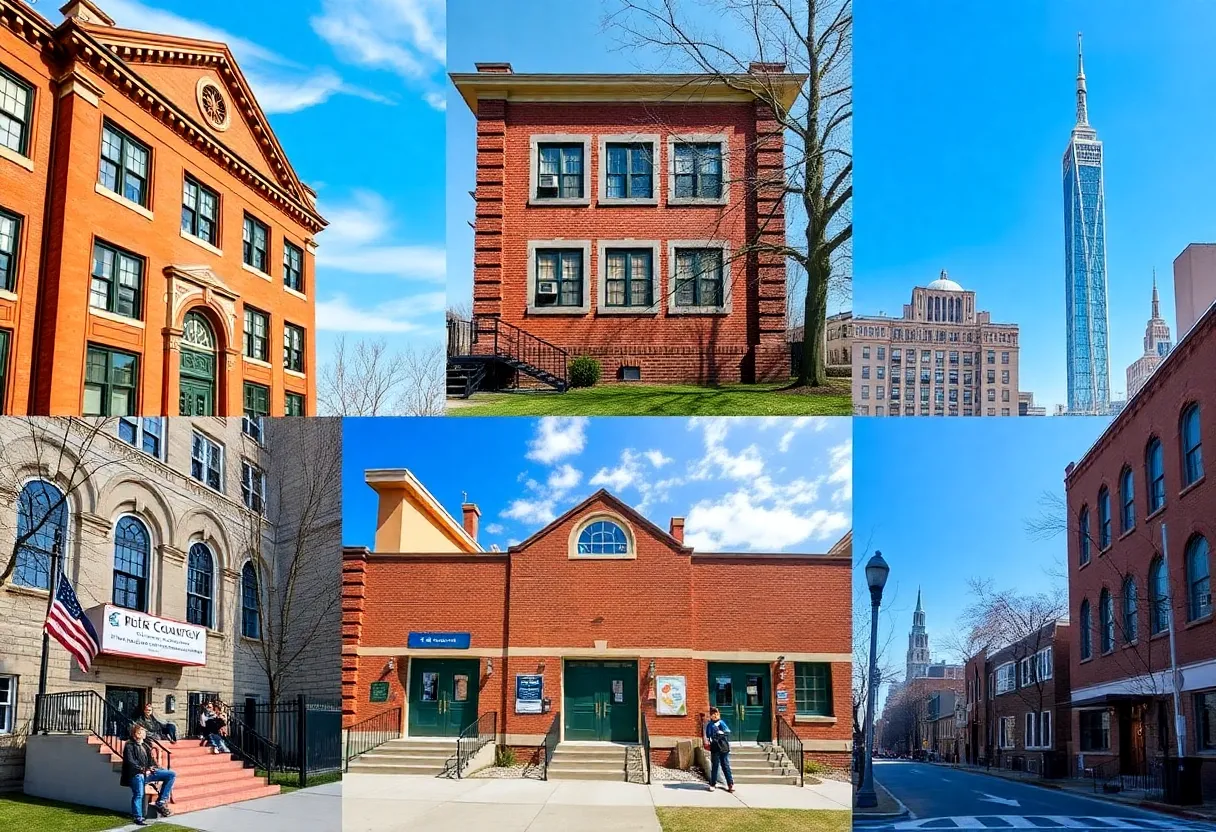News Summary
The Federal Reserve has decided to maintain its benchmark federal funds interest rate at 4.25% to 4.5%, which builders hoped would be cut to stimulate construction projects. With inflation concerns persisting, including a 2.7% annual increase in the consumer price index, high borrowing costs are challenging contractors. Despite pressures from the administration, experts suggest the Fed’s decision reflects a careful approach to managing inflation and economic realities. Contractors are adapting their strategies amidst rising construction costs and tighter financing conditions.
Washington D.C. — The Federal Reserve has decided to keep its benchmark federal funds interest rate steady at a range of 4.25% to 4.5%, disappointing many builders who had hoped for a rate cut to reignite dormant construction projects. This decision comes amidst ongoing inflation concerns, with recent data showing a 2.7% annual rate increase in the consumer price index for June, exceeding the Fed’s targeted 2%.
The Fed’s hold on interest rates impacts developers who rely on traditional financing avenues. Prolonged high borrowing costs are becoming a significant hurdle for these builders, as they seek to navigate rising costs and tight cash flows. The pressure from the administration, particularly from President Donald Trump, has been notable, with calls for a reduction in rates to stimulate the economy. Trump has even suggested the possibility of firing Fed Chair Jerome Powell, although experts assert that the president’s authority to dismiss the chair is questionable without just cause.
The rising costs of construction are adding to the strain. Reports indicate that construction input prices increased by 2.5% in the first half of 2025, with certain materials, such as copper wire and cable, seeing dramatic price hikes. This inflationary environment is compelling contractors to rethink their strategies and consider diversifying their project portfolios to manage risks.
The adjustments among contractors reflect a more cautious approach to project financing and execution in the face of market pressures. Joe Biasi, who specializes in commercial capital markets research, notes that many ongoing projects rely on short-term floating debt. As traditional financing markets show signs of caution, contractors are adapting by focusing on public projects as private financing environments grow more constrained.
According to GCM Contracting Solutions’ CEO, adopting a design-build model is instrumental in keeping costs and timelines in check, emphasizing the value of self-performing tasks. With a significant focus on project feasibility studies, contractors are spending more time engaging in detailed planning and client discussions, particularly regarding financial challenges they face during implementation.
Despite the challenging environment, sectors like data centers and manufacturing are expected to experience growth, while traditional financing markets are slowing down. Adolfson & Peterson’s Granger Hassmann highlights the greater resilience provided by a mix of public and private work, which has helped to mitigate the downturn in weaker commercial sectors.
While many firms express concern about labor shortages potentially hampering a boom in new construction—even if interest rates eventually decline—others are focusing on maintaining quality backlogs over sheer volume. The current climate necessitates a shift towards stricter preconstruction planning and adaptive execution, which are becoming vital for contractors’ success.
As 2026 approaches, construction companies are warned to expect slower movements in financial markets, leading to increased scrutiny and cautious approaches to financing and project management. In this landscape, contractors are increasingly proactive in discussing project timelines and navigating financing challenges, ensuring they are prepared to adjust to the evolving economic realities.
The Federal Reserve’s decision reflects its commitment to managing inflation while observing the economic landscape closely. As builders adapt to these changes, the focus remains on resilience, flexibility, and strategic planning to navigate a complex and challenging market environment.
Deeper Dive: News & Info About This Topic
HERE Resources
U.S. Job Openings Decrease Significantly in June
Upcoming Economic Data Set to Impact U.S. Housing Market
New York Senate Republicans Urge State of Emergency for Energy Costs
Concerns Rise Over NYC Tax Increases and Business Relocation
New York City Faces Funding Cuts Amid Federal Tax Changes
New York State Pays Off $7 Billion Unemployment Debt
New York City Hosts Record-Breaking Small Business Challenge
Cahoon Farms Secures Historic Union Contract for Farmworkers
Escalating Tensions Between Israel and Iran Trigger Surge in Oil Prices
Businesses in New York Raise Prices Due to Increased Tariffs
Additional Resources
- Wall Street Journal: Federal Reserve Building Renovation
- Fortune: Federal Reserve Renovation Cost Explained
- The New York Times: Trump on Federal Reserve Renovations
- Bloomberg: Trump Attacks Powell Over Fed Renovation Costs
- CNN: Powell and Federal Reserve Renovation
- Wikipedia: Federal Reserve
- Google Search: Federal Reserve renovation
- Google Scholar: Federal Reserve building renovation
- Encyclopedia Britannica: Federal Reserve
- Google News: Federal Reserve renovation
Author: STAFF HERE NEW YORK WRITER
The NEW YORK STAFF WRITER represents the experienced team at HERENewYork.com, your go-to source for actionable local news and information in New York, the five boroughs, and beyond. Specializing in "news you can use," we cover essential topics like product reviews for personal and business needs, local business directories, politics, real estate trends, neighborhood insights, and state news affecting the area—with deep expertise drawn from years of dedicated reporting and strong community input, including local press releases and business updates. We deliver top reporting on high-value events such as New York Fashion Week, Macy's Thanksgiving Day Parade, and Tribeca Film Festival. Our coverage extends to key organizations like the Greater New York Chamber of Commerce and United Way of New York, plus leading businesses in finance and media that power the local economy such as JPMorgan Chase, Goldman Sachs, and Bloomberg. As part of the broader HERE network, including HEREBuffalo.com, we provide comprehensive, credible insights into New York's dynamic landscape.





